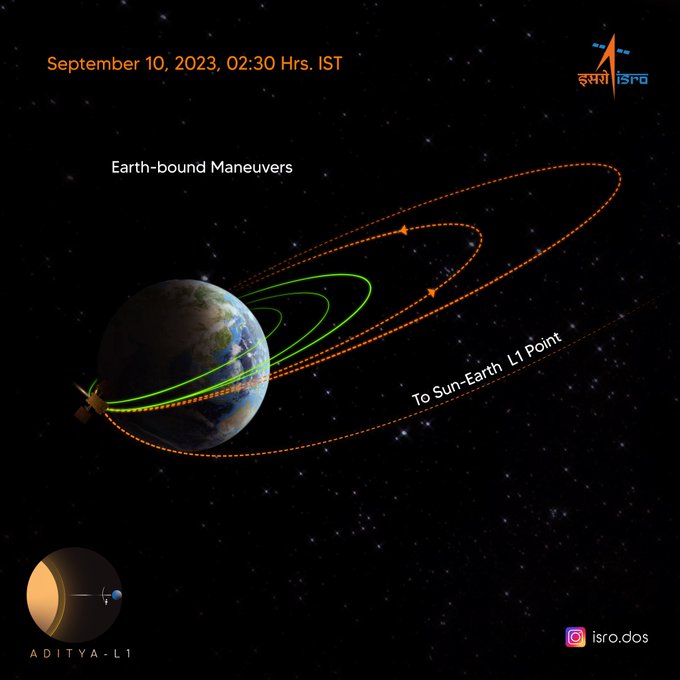the Aditya L1 spacecraft successfully underwent its fourth earth-bound manoeuvre on September 15, 2023. The manoeuvre was performed to raise the spacecraft’s orbit and bring it closer to its final destination at the Lagrange point 1 (L1) between the Earth and the Sun.
The manoeuvre lasted for about 20 minutes and was carried out by firing the spacecraft’s four thrusters. The thrusters were fired at a specific time and for a specific duration to change the spacecraft’s velocity and orbit.
“The fourth Earth-bound manoeuvre (EBN#4) is performed successfully. ISRO’s ground stations at Mauritius, Bengaluru, SDSC-SHAR and Port Blair tracked the satellite during this operation, while a transportable terminal currently stationed in the Fiji islands for Aditya-L1 will support post-burn operations,” the space agency said in a post on X, a platform formerly known as Twitter.

The new orbit attained is 256 km x 121973 km, it said: “The next manoeuvre Trans-Lagragean Point 1 Insertion (TL1I) — a send-off from the Earth — is scheduled for September 19, around 02:00 Hrs. IST.” Aditya-L1 is the first Indian space-based observatory to study the Sun from a halo orbit around the first Sun-Earth Lagrangian point (L1), which is located roughly 1.5 million km from the Earth.
The first, second and third earth-bound manoeuvre was successfully performed on September 3, 5 and 10 respectively. The manoeuvres are being performed during the spacecraft’s 16-day journey around the Earth during which the spacecraft will gain the necessary velocity for its further journey to L1.
With the completion of four earth-bound orbital manoeuvres, Aditya-L1 will next undergo a Trans-Lagrangian1 insertion manoeuvre, marking the beginning of its nearly 110-day trajectory to the destination around the L1 Lagrange point.
Upon arrival at the L1 point, another manoeuvre binds Aditya L1 to an orbit around L1, a balanced gravitational location between the Earth and the Sun.
The satellite spends its whole mission life orbiting around L1 in an irregularly shaped orbit in a plane roughly perpendicular to the line joining the Earth and the Sun.
ISRO’s Polar Satellite Launch Vehicle (PSLV-C57) on September 2 successfully launched the Aditya-L1 spacecraft from the Second Launch Pad of Satish Dhawan Space Centre (SDSC), Sriharikota. After a flight duration of 63 minutes and 20 seconds that day, the Aditya-L1 spacecraft was successfully injected into an elliptical orbit of 235×19500 km around the Earth.
The Aditya L1 mission is India’s first dedicated mission to study the Sun. The spacecraft is carrying seven scientific payloads that will study the Sun’s atmosphere, corona, and magnetic field. The mission is expected to provide new insights into the Sun’s behavior and its impact on Earth’s climate and space weather.